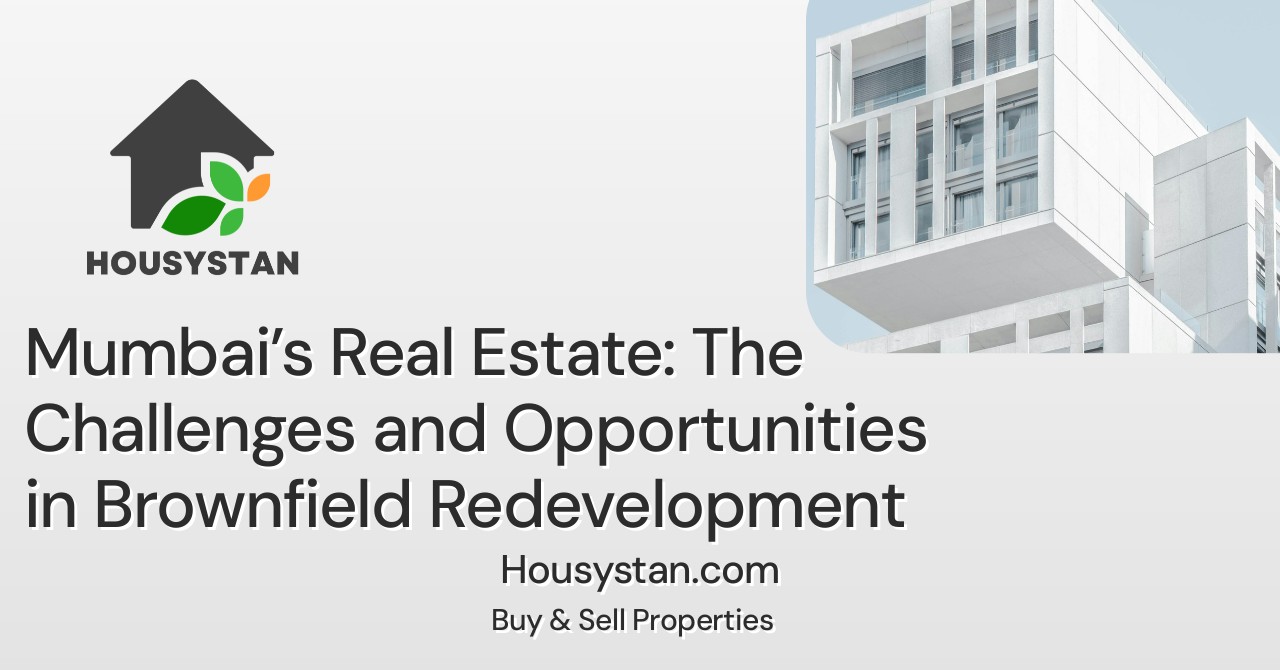Mumbai’s Real Estate: The Challenges and Opportunities in Brownfield Redevelopment
Read latest blogs and articles from Housystan

The Information mentioned here was last updated on:
4/1/2026Mumbai, India’s bustling financial capital, is experiencing a dynamic transformation in its urban landscape, particularly through brownfield redevelopment. This evolving trend represents a significant opportunity for sustainable growth, while also presenting unique challenges for developers, residents, and city planners alike. As Mumbai’s population continues to soar, the demand for innovative solutions to maximize existing land resources has never been more critical. Brownfield redevelopment, which involves repurposing previously used or underutilized urban spaces, is at the forefront of Mumbai’s real estate evolution.
One of the primary challenges in Mumbai’s brownfield projects stems from the city’s dense population and complex legal landscape. Many older properties are entangled in legal disputes, unclear ownership, or heritage restrictions, making acquisition and redevelopment a lengthy and complicated process. Additionally, outdated infrastructure in these zones often requires extensive upgrades, increasing upfront investment and timelines. Environmental remediation is another key consideration, as many brownfield sites may have contamination concerns that must be addressed to ensure safe, livable spaces for future occupants.
Despite these obstacles, brownfield redevelopment offers immense opportunities for Mumbai’s real estate sector. Strategically located in established neighborhoods, these projects can rejuvenate communities by providing modern residential and commercial spaces without further urban sprawl. Proximity to existing infrastructure such as transportation networks, schools, hospitals, and employment hubs makes these redeveloped sites highly attractive for both homebuyers and investors. Furthermore, government incentives and streamlined approval processes are increasingly being introduced to encourage private participation in transforming old mill lands, industrial plots, and dilapidated buildings.
- Verified Tenants/Buyers
- Unlimited Property Listing
- Zero subscription/charges fee
Sustainable urban development is another significant benefit of brownfield initiatives in Mumbai. By repurposing existing land, the city can reduce pressure on its limited greenfield sites, preserve natural ecosystems, and promote eco-friendly construction practices. Innovative architectural designs, energy-efficient buildings, and integrated community amenities are becoming hallmarks of Mumbai’s new brownfield developments, setting benchmarks for future growth. With collaborative efforts between government authorities, private developers, and local communities, Mumbai’s brownfield redevelopment is poised to shape a resilient, inclusive, and prosperous urban future.